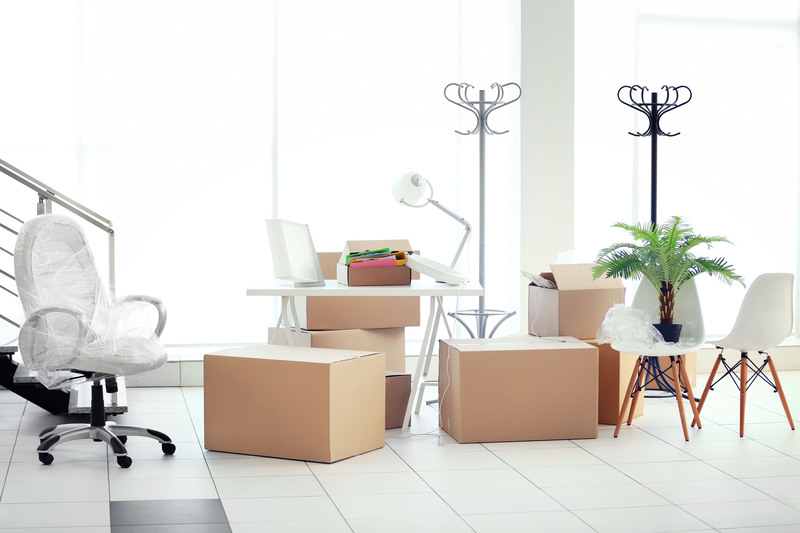Sofa Longevity: Navigate Long-Term Storage with Expert Advice
Posted on 18/05/2025
Sofa Longevity: Navigate Long-Term Storage with Expert Advice
Your sofa is more than just another piece of furniture--it's a place of comfort, memories, and relaxation. If you're considering storing your sofa for the long haul, a strategic approach can preserve both its style and structural integrity. In this comprehensive guide, you'll learn how to maximize your sofa's longevity during long-term storage by employing expert-backed methods that protect your investment and ensure a seamless return to daily comfort.

Why Is Sofa Longevity Important When Storing Long-Term?
Choosing to store a sofa isn't always merely about saving space. Life events such as moving, renovating, or downsizing may require putting your beloved sofa into storage for months, or even years. However, improper storage can lead to:
- Mold and mildew buildup
- Fabric discoloration or fading
- Structural damage to frames or cushions
- Pest infestations
- Unpleasant odors
Investing in proper long-term storage techniques ensures your sofa remains in optimal condition and extends its usable life.
Essential Steps to Prepare Your Sofa for Long-Term Storage
1. Deep Clean Your Sofa Thoroughly
Cleaning your sofa before storage is absolutely crucial for longevity. Dirt, crumbs, oils, and stains left on fabric or leather can worsen over time and attract pests or cause permanent discoloration.
- For fabric sofas, vacuum all surfaces, including under the cushions and in crevices.
- Spot-treat any stains with a gentle, manufacturer-approved cleaner.
- If possible, use a steam cleaner to kill bacteria and lift deep grime.
- For leather sofas, wipe down surfaces with a slightly damp cloth, then apply a leather conditioner to prevent cracking and dryness.
2. Disassemble Where Possible
Disassembling your sofa, if designed for it, provides several key advantages for long-term storage:
- Reduces risk of bending or warping frames
- Makes moving and lifting easier and safer
- Prevents pressure points that can cause indentations or fabric wrinkles
Remove detachable legs, cushions, and arms (if applicable), and keep all hardware in a labeled bag.
3. Wrap and Protect the Sofa Properly
Never use regular plastic wrap directly over upholstery. Instead, follow these steps for best protection:
- Wrap the sofa with a clean, breathable fabric, such as moving blankets or cotton sheets, to shield against dust and light while allowing airflow.
- For additional moisture protection, place plastic sheeting or furniture covers over the fabric layer. Ensure that plastic never touches the sofa surface directly, as this can trap condensation and promote mold.
- Tape or tuck wraps securely to avoid shifting during handling or storage.
Protective wrapping is the single most effective step for sofa longevity in storage.
4. Choose the Right Storage Facility
Not all storage units are created equal. When storing sofas for several months or longer, a climate-controlled storage unit is strongly recommended. Here's why:
- Temperature and humidity control to prevent wood warping, fabric deterioration, and leather cracking
- Enhanced air circulation to minimize mold growth and odor accumulation
- Protection from pests and fluctuating weather conditions
If climate control is unavailable, select a clean, dry, and well-ventilated space. Elevate your sofa (see below) to further improve airflow.
5. Elevate Your Sofa Off the Ground
Long-term contact with storage unit floors exposes your sofa to residual moisture and temperature changes. Use wooden pallets, furniture risers, or sturdy blocks to lift the sofa at least a few inches above the ground. This simple step significantly boosts sofa durability and longevity in storage.
6. Avoid Stacking Items on Your Sofa
Even lightweight boxes or bags can create indents in cushions and stress sofa frames over time. Always store your sofa upright and without items stacked on top for optimal preservation.
7. Maintain Air Circulation & Prevent Moisture
Stagnant air leads to musty odors and fosters mold growth. Consider placing moisture absorbers--such as silica gel packets or specialized desiccant bags--in and around the sofa while in storage.
- Leave a slight gap between the sofa and storage unit walls to encourage airflow.
- Regularly inspect the storage unit for leaks or dampness, especially during season changes.
Expert Tips for Enhanced Sofa Storage Longevity
Use Furniture-Specific Covers
Invest in covers made for sofas rather than general plastic sheeting or household blankets. These covers are:
- Designed to fit snugly without shifting during storage or transport
- Typically vapor-permeable, avoiding condensation buildup
- Made from materials that shield against light, dust, and insects
Document and Photograph Your Sofa Pre-Storage
Taking photos and detailed notes before storage can help with insurance claims if damage occurs and provides a reference for reassembly. Focus on areas prone to damage, such as corners, legs, and seams.
Add a Layer of Pest Prevention
Pests can cause catastrophic damage to upholstery and wooden frames. Reduce risk by:
- Inspecting the storage area and cleaning thoroughly before move-in
- Never storing food or organic material nearby
- Using safe, sealed pest repellents around but not directly on the sofa
Revisit Your Stored Sofa Periodically
If possible, check on your sofa every few months:
- Inspect covers and adjust them if needed
- Look for signs of moisture, pests, or damage
- Air out the unit briefly if climate and security allow
Consider Professional Storage Services
If your sofa has significant monetary or sentimental value--for instance, antique, designer, or heirloom pieces--consult furniture storage specialists for tailored solutions such as custom crates, enhanced climate monitoring, and insurance options.
Common Mistakes to Avoid for Ultimate Sofa Longevity in Storage
Even with the best intentions, it's easy to make errors that can reduce your sofa's lifespan when putting it into storage. Avoid the following:
- Skipping the cleaning process. Leftover dirt, oils, and debris often lead to set-in stains and pest problems later.
- Wrapping the sofa in plastic only. Trapped moisture is a sofa's enemy--always use a protective, breathable layer first.
- Storing in damp or leaky units. Even temporary exposure to moisture can trigger mold growth.
- Stacking heavy items on seat cushions. This causes permanent compression and misshaping.
- Neglecting to check on the sofa periodically. Unchecked issues, from pests to temperature swings, can rapidly escalate.
Unpacking Your Sofa: Bringing It Home from Storage
When the time comes to retrieve your sofa from long-term storage, reverse the process carefully to avoid last-minute damage:
- Clean your hands and the surrounding area before handling your furniture.
- Remove protective layers gently. Avoid dragging tape or plastic across surfaces to prevent ripping or stretching.
- Let the sofa sit in a ventilated, clean space to air out and adjust to your home's humidity and temperature before use.
- Re-inspect for any signs of mold, pests, or frame loosening.
- Reassemble any disassembled components securely and refer to pre-storage photos if needed.
- Freshen fabric or leather with a suitable cleaner or deodorizer.
Extending Sofa Life Beyond Storage: Care & Maintenance Tips
Once your sofa is back in use, continue these practices to maximize its functional and aesthetic lifespan:
- Vacuum regularly and spot-clean spills promptly.
- Rotate cushions and pads frequently to distribute wear evenly.
- Avoid placing in direct sunlight or near heating vents.
- Condition leather surfaces as recommended by the manufacturer.
- Address wobbly legs or loosened hardware immediately.

Frequently Asked Questions About Storing Sofas Long-Term
Can I store my sofa in a regular self-storage unit?
While it's possible, climate-controlled units are always preferable for protecting upholstery and wood from temperature and humidity extremes. If you must use a standard unit, prioritize breathability, pest prevention, and regular check-ins.
How do I protect my leather sofa in storage?
Condition the leather before wrapping it in a breathable cover. Avoid plastic directly on the leather. Maintain climate controls and periodically inspect for signs of drying, cracking, or mildew.
What should I avoid placing near my stored sofa?
Never store food items, plants, or liquids nearby. Avoid sharp objects and materials that could puncture wraps or upholstery. Chemicals and cleaning supplies should also be kept far away.
How do I prevent mold on my sofa during long-term storage?
Ensure everything is completely dry before storage, use silica gel or desiccant packs, and wrap in breathable materials. Choose a climate-controlled or at least well-ventilated space.
Conclusion: Prioritize Sofa Longevity with Proper Storage
With the right methods and preparation--from pre-storage cleaning to storage unit selection and protective layering--you can significantly extend your sofa's lifespan, ensuring it emerges from storage as elegantly as it went in. By following these expert tips on sofa longevity during long-term storage, you'll be ready to relax and enjoy your favorite furniture piece for years to come. Start planning now, and your sofa will thank you later!



